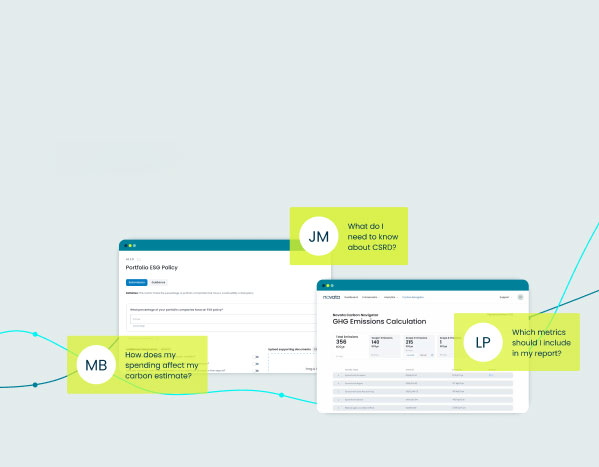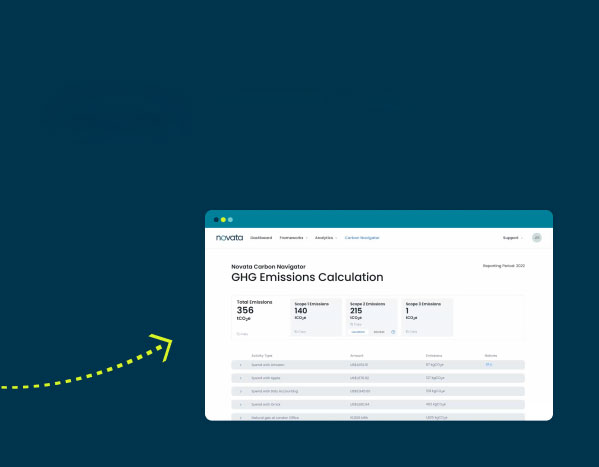Novata recently hosted a webinar on the topic “How to Build an ESG Strategy for Private Equity.” This article includes insights from the session. Watch the replay here.
It’s often said that what gets measured gets improved, and the sentiment holds true for incorporating ESG in private markets. When building your ESG strategy, identifying what ESG metrics matter to you will be the backbone of your ESG journey and narrative. It will also inform how you engage with portfolio companies on environmental, social, and governance issues.
The ESG landscape is rapidly evolving, and the lack of standardization around ESG reporting can be a roadblock for GPs navigating ESG. For example, a 2020 Intertrust study found that 69% of GPs predicted it would take five years to produce standardized ESG data across their portfolio companies.
That said, identifying the ESG metrics that are material to the firm can help create internal alignment on data, ensure consistency in reporting, and enable you to identify opportunities to mitigate risks and drive value for portfolio companies.
Six Considerations for Identifying ESG Metrics
As you get started, here are a few factors to help you narrow your focus:
1. Align with ESG policy
An ESG policy is a foundational piece of your strategy that outlines your firm’s sustainability values and demonstrates your approach to responsible investing. When developing your policy, a materiality assessment helps determine which environmental, social, and governance factors are most relevant to your firm and stakeholders. The policy can serve as a guide when selecting material ESG metrics, which should also align with your values and goals.
2. Think holistically about your stakeholders
In choosing the specific ESG metrics material to your firm, consider your key stakeholders and the issues most relevant to them. LPs, for instance, may have different priorities around environmental, social, and governance issues that should be reflected in your metric selection. This can help you align your goals internally and select metrics that best speak to these goals and your industry exposure.
3. Incorporate portfolio companies
Your portfolio companies will have different risks and opportunities related to ESG. In addition to setting targets across the portfolio, it’s also important to consider metrics specific to each company and its unique ESG challenges, keeping in mind that sensitivities differ by industry. A good starting point is mapping out the industries in which all your portfolio companies operate and their potential impact on the planet and local communities.
4. Account for potential risks
Risk mitigation is crucial for protecting a company’s bottom line and securing long-term financial performance. By identifying potential reputational and physical risks relevant to your firm and portfolios’ ESG exposure, you’ll be better able to set relevant metrics to mitigate these issues.
5. Review regulatory requirements
Regulations around ESG disclosures tend to be location-specific. This means firms that operate internationally may be required to meet different standards. Considering the relevant regulations is important to ensure your firm meets any mandatory requirements. For instance, the Sustainable Finance Disclosure Regulation (SFDR) applies to asset managers and other financial market participants in the EU and any companies registered to market to EU investors. Similarly, in the US, private companies that supply to publicly traded companies may be required to disclose climate-related risks in line with the SEC’s proposed climate disclosure rule.
6. Select relevant frameworks
In the ESG space, widely accepted standards and frameworks, such as the Global Reporting Initiative, the ESG Data Convergence Initiative, or the Sustainability Accounting Standards Board, exist to guide corporate disclosures. But the purpose and focus of each framework differ. For example, SASB looks at which metrics are purely financially material by industry and doesn’t account for double-materiality. On the other hand, GRI is industry agnostic and covers a broad range of issues ranging from worker health and safety to human rights, water emissions, and anti-corruption.
Track The ESG Metrics That Matter For Your Private Equity Firm
Identifying key metrics that matter to the firm is necessary for data collection, benchmarking performance, reporting to LPs, and engaging stakeholders. As you get started, the Novata Metric Library provides an initial overview of commonly defined metrics and why they are important. Reach out to learn how Novata can help you along your ESG journey.






